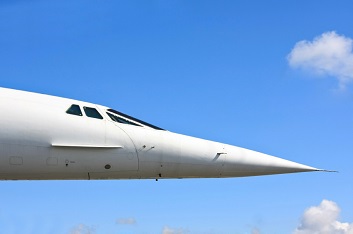
At this week’s NBAA Business Aviation Convention & Exhibition, the Aerospace industry saw an announcement which marked a significant step in the re-introduction of supersonic aircraft over our skies.
US flight-share company FlexJet, announced the agreement to buy 20 of Aerion’s proposed AS2 supersonic business jets – with deliveries set to begin in 2023. Whilst financial details were undisclosed, at $100m a piece, the entire deal could be worth $2bn. The Aerion AS2 project had previously been discussed for over a decade, but with new orders and an enhanced role of Airbus, the dream could now become much more of a reality.
The Aerion AS2 is a proposed 30ft long business aircraft, designed to carry 12 passenger seats, achieve a flight speed of Mach 1.6 and around a 20% reduction in drag due to new wing technology. The AS2 will also have 4,750 nautical mile range at supersonic speed, saving three hours across the Atlantic versus subsonic aircraft and more than six hours on longer trans-Pacific routes.
This announcement was coupled with Airbus stating that it will step up its involvement in the project, providing major parts and components, as well as design and certification. Aerion will conduct final assembly, and are set to decide next year on a 100-acre area near a U.S. airport with a runway at least 9,000 feet long to be built by 2018. Airbus’ involvement could also spark an integral role for the UK – where there is a potential for the wings for the AS2 to be designed and built in Broughton, North Wales. With the design and exterior of the aircraft critical for it to reach supersonic speeds, as well as remain efficient in subsonic speeds, the UK could be central to the aircraft’s capabilities.
Whilst the project is still very much in the early stages – as well as a number of hurdles and challenges to overcome (which I outlined in a blog this time last year), the next 8 years could witness a renaissance in supersonic travel.





